Roster Leandro RomagnoliMidfielder, Leandro Romagnoli, 10, Mario YepesDefender, Mario Yepes, 3, Nestor OrtigozaMidfielder, Nestor Ortigoza, 20, Sebastian BlancoMidfielder, Sebastian Blanco, 23, Hector Daniel VillalbaForward, Hector Daniel Villalba, 15, Mauro MatosForward, Mauro Matos, 26, Julio BuffariniMidfielder, Julio Buffarini, 7, Franco MussisMidfielder, Franco Mussis, 28, Martin CauteruccioForward, Martin Cauteruccio, 9, Matias CaruzzoDefender, Matias Caruzzo, , Juan Ignacio MercierMidfielder, Juan Ignacio Mercier, 5, Alan RuizMidfielder, Alan Ruiz, 22, Sebastian TorricoGoalkeeper, Sebastian Torrico, 12, Emmanuel MasDefender, Emmanuel Mas, 21, Mauro CettoDefender, Mauro Cetto, 2, Eduardo Alejandro MeloMidfielder, Eduardo Alejandro Melo, , Gonzalo VeronForward, Gonzalo Veron, 30, Alejandro BarbaroMidfielder, Alejandro Barbaro, 16, Bernardo Romeo, Bernardo Romeo, , Leo FrancoGoalkeeper, Leo Franco, 17, Enzo KalinskiMidfielder, Enzo Kalinski, 8, Juan CavallaroMidfielder, Juan Cavallaro, 24, Santiago Gentiletti, Santiago Gentiletti, 6, Fabricio FontaniniDefender, Fabricio Fontanini, 29, Pablo AlvaradoDefender, Pablo Alvarado, 25, Gonzalo ProsperiDefender, Gonzalo Prosperi, 4, Fernando ElizariMidfielder, Fernando Elizari, , Guillermo Pereyra, Guillermo Pereyra, , German VoborilDefender, German Voboril, 3, Ezequiel MastroliaGoalkeeper, Ezequiel Mastrolia, 34, Luis AguiarMidfielder, Luis Aguiar, 19, Claudio Acosta, Claudio Acosta, , Rodrigo ContrerasForward, Rodrigo Contreras, 36, Ramiro AriasDefender, Ramiro Arias, 13, Augusto Tomas AlvarezMidfielder, Augusto Tomas Alvarez, 20, Lucas ChaparroDefender, Lucas Chaparro, 41, Alejandro AlemandiDefender, Alejandro Alemandi, 31, Ezequiel MontagnaForward, Ezequiel Montagna, 32 | ||
League Argentine Primera Division Founded 1 April 1908; 107 years ago (1908-04-01) | ||
Map of San Lorenzo de Almagro
Club Atlético San Lorenzo de Almagro, commonly known as San Lorenzo de Almagro or simply San Lorenzo (in English: Saint Lawrence), is an Argentine sports club based in the Boedo district of Buenos Aires. It is best known for its football team, which plays in the Primera División, the first tier of the Argentine football league system. San Lorenzo is also considered one of the "big five" ("Los 5 Grandes") of Argentine football by Argentine press, with Independiente, River Plate, Boca Juniors, and Racing Club.
Contents
- Map of San Lorenzo de Almagro
- Hinchada de san lorenzo de almagro
- Origins of the club
- First years in Primera
- The success begins
- The 1940s The best team in the world
- The 1960s 1970s and 1980s
- The 1990s
- The New Millennium
- Stadium
- Nicknames
- Current squad
- Out on loan
- Former players
- Records
- League
- National cups
- Unofficial cups
- International
- Women
- Basketball
- References
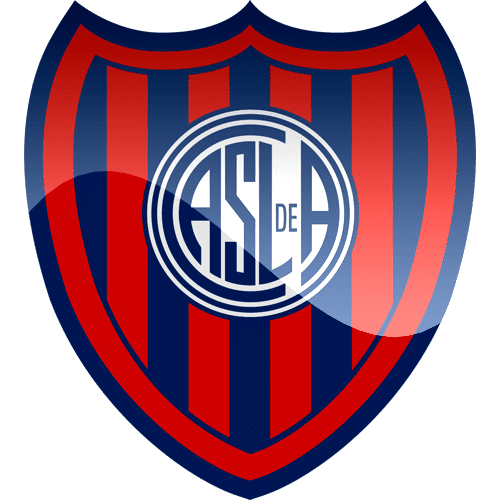
San Lorenzo plays its home games at Estadio Pedro Bidegain, popularly known as Nuevo Gasómetro. The stadium and sports facilities are located in Bajo Flores district of the Buenos Aires, considered one of the most dangerous neighborhoods of Buenos Aires. The club's previous stadium was the Viejo Gasómetro, located in the Boedo district. After the match was played there in 1979, the Gasómetro was expropriated by the de facto Government of Argentina and then sold to chain of supermarkets Carrefour. The club currently has five headquarters: three in Boedo, one in Monserrat, and one at Bajo Flores, all of them in the city of Buenos Aires. San Lorenzo also plans to expand its main seat on La Plata Avenue, while a 15-hectare campus in Ezeiza is projected to develop an olympic football program.
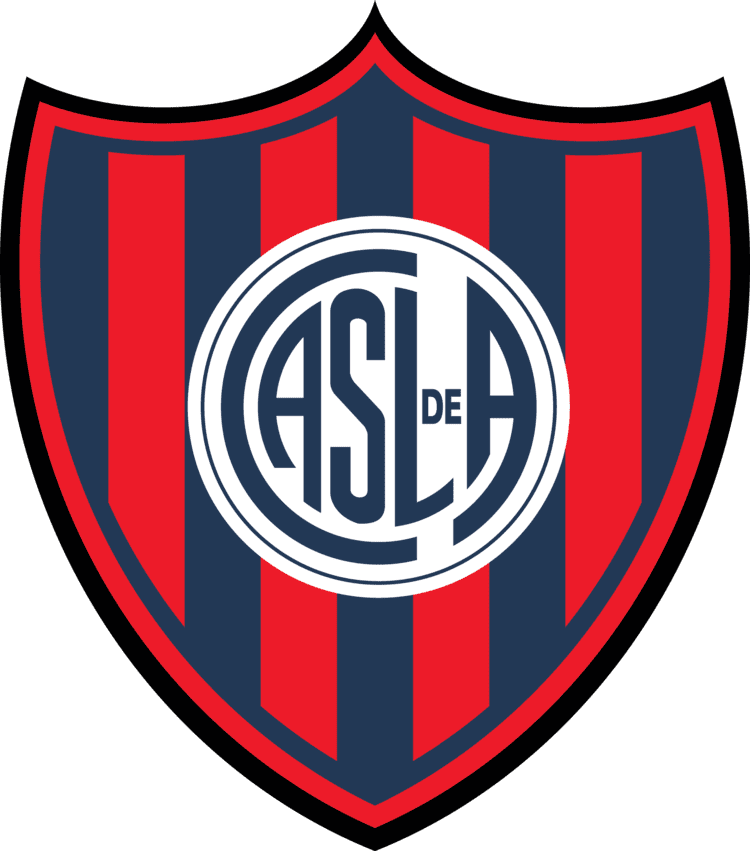
San Lorenzo's historical rival is Huracán, located in Parque Patricios. The two clubs play one of the older derbies in Argentina. Some supporters consider this derby as the third most important after Superclásico and Clásico de Avellaneda, in addition to being one of the most uneven derbies of Argentine Soccer.

Other sports practised at the club are artistic roller skating, basketball, field hockey, futsal, handball, martial arts, roller hockey, swimming, tennis and volleyball. Some years ago, San Lorenzo had also opened a rugby union section, but it is no longer active. San Lorenzo gained international recognition in March 2013 with the election of Pope Francis, a supporter of the club. The players played with the Pope's photo on their shirts during a league match against Colón de Santa Fe on 16 March 2013. The institution is also known because of the actor Viggo Mortensen, supporter of the team, who spent part of his childhood in Argentina.
Hinchada de san lorenzo de almagro
Origins of the club
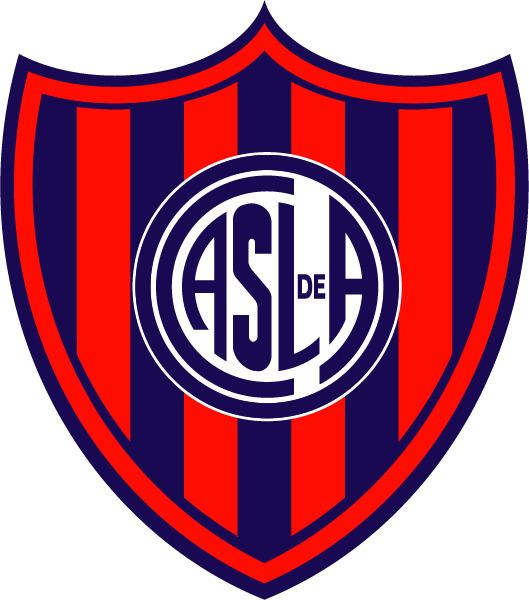
The roots of the institution can be found in a team formed by a group of kids that used to play football in the corner of México and Treinta y Tres Orientales streets of Buenos Aires. Due to the increasing traffic in the city, playing football at the streets became a risky activity for the boys. Lorenzo Massa, the catholic priest of the neighborhood's church, saw how a tram almost knocked down one of the boys while they were playing in the streets. As a way to prevent more accidents, he offered the boys to play in the church's backyard, under the condition they had to go to mass on Sundays.
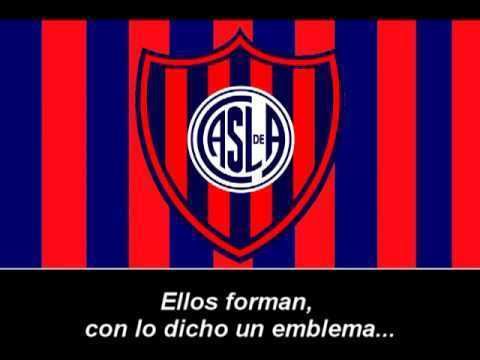
On 1 April 1908, an assemble was held in the Almagro district of Buenos Aires with the purpose of establishing a club. During the meeting, several names were proposed. The first option was "Los Forzosos de Almagro" ("The Strongmen of Almagro", the name used by the boys for their street football squad), which did not sound good to Father Massa (who was present at the assemble). The other proposal was to name the club "San Lorenzo" as an homage to Massa, but he refused to be honored that way.
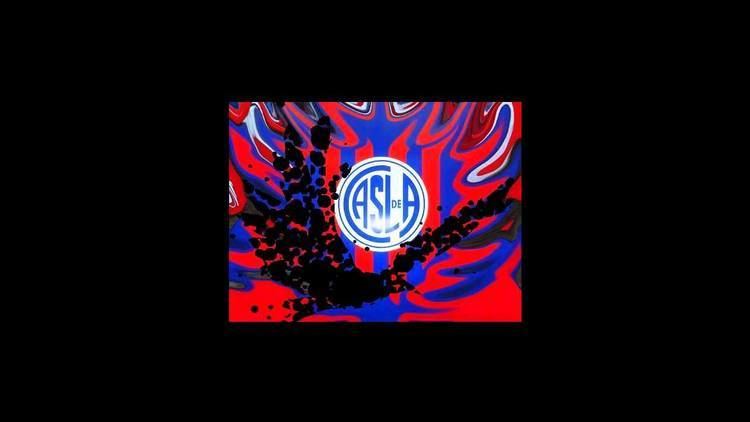
Nevertheless, the name was finally accepted by the priest, explaining that the name would not honor himself but both, Lawrence of Rome ("San Lorenzo" in Spanish) and the Battle of San Lorenzo, one of the most significative combats for the Independence of Argentina. Other founder member, Federico Monti, suggested to add the name of the neighbourhood, Almagro where most of the members lived in, which was accepted by the assemble.
Due to the team not having its own a stadium, San Lorenzo began to play its home games in a field property of the Club Martínez, placed in the nearby town of the same name. The squad played its first match on 26 April 1914, and at the end of the season San Lorenzo had to play a final match facing Excursionistas to proclaim a champion. San Lorenzo won the series (the results were 0–0 and 5–0). This title allowed San Lorenzo to dispute the playoffs in order to promote to the Argentine Primera División, which finally obtained after beating Club Honor y Patria by a score of 3–0.
First years in Primera
San Lorenzo began to play at the Argentine Football Association tournaments on 26 April 1914 in the second division, where the team ended sharing the first place with Excursionistas. As a result, both teams had to play a two-match series in order to determine which team would pass to the playoffs. San Lorenzo won the series after thrashing Excursionistas 5–0 in the second game.
In playoffs, San Lorenzo eliminated other teams before playing the final against Honor y Patria, which defeated by 3–0 promoting to Primera División.´
San Lorenzo made its debut in Primera on 4 April 1915, being beat by Platense by 5–1. The first match won at the top division was in the 7th fixture, when the team defeated Floresta by 3–1. San Lorenzo finished 12th at the end of the season, sharing position with Gimnasia y Esgrima de Buenos Aires.
On 7 May 1916 the club inaugurated its first stadium (popularly known as "Viejo Gasómetro" during a match against Estudiantes de La Plata, which San Lorenzo won by 2–1. That same year, the team finished 7th in the Primera División championship. In subsequent tournaments the team did not make good campaigns, finishing 12th and 13th. In 1919 the Argentine league split into two leagues, the official Asociación Argentina and dissident Asociación Amateur (AAm), which San Lorenzo took part of along with Racing Club, River Plate and Independiente, among other teams. San Lorenzo finished 9th.
The success begins
In 1920 and 1922 San Lorenzo achieved a 3rd position, finally winning its first title in 1923. The squad won 17 of 20 games, only losing 2. San Lorenzo scored 34 goals in 20 fixtures, receiving 13. That same year the squad also won its first international title, The Copa Campeonato del Río de la Plata after beating Montevideo Wanderers 1–0 at the final.
San Lorenzo won its second consecutive Primera División title one year later. The team played 23 matches winning 18 with 2 losses, with a total of 48 goals scored and 15 received. In the following two seasons (1925 and 1926) San Lorenzo would make great performances finishing 2nd to Racing Club and Independiente respectively finally achieving its 3rd. title in 1927 when both leagues AAF and AAm had joined again. The squad totalized 57 points in 33 matches played with an outstanding mark of 86 goals scored (2,60 per game) and receiving only 26.
Apart of winning the domestic league, in 1927 San Lorenzo won its first and only Copa Aldao, after defeating Uruguayan team (Rampla Juniors) by 1–0. The club soon became one of the most popular institutions in Argentina, increasing its number of followers and being counted in the top five (cinco grandes) together with Boca Juniors, Independiente, River Plate and Racing Club.
In the 1930s, Isidro Lángara and other players of Basque descent endeared San Lorenzo to the Basque community. The team also relied on players from the provinces, known as los gauchos. San Lorenzo returned to success in 1933, when the team won its 4th league championship. The squad totalised 50 points with 22 wins, 6 losses and 6 draws. San Lorenzo scored 81 goals and conceded 48. Boca Juniors was the runner-up while Racing Club finished 3rd.
In 1936, there were two championships within the year, in a format of single-robin tournaments. San Lorenzo won the first round (named "Copa de Honor" for the occasion) while River Plate won the second round ("Copa Campeonato"). Although titles were recognised as official by the Association, both champions, San Lorenzo and River Plate, had to play a match (named "Copa de Oro") in order to define which team would play the Copa Aldao match v. the Uruguayan Primera División champion. Finally, River Plate won the game by 4–2 and qualified to play Peñarol.
The 1940s: "The best team in the world"
In 1943, San Lorenzo won this national cup, the Copa General Pedro Ramírez, named in honor of Pedro Pablo Ramírez, the de facto president of Argentina by then. San Lorenzo won the trophy after defeating General Paz Juniors by 8–3.
After the 1936 success, San Lorenzo would not win a league title until ten years after, when in 1946 proclaimed champion with a total of 46 points (the runner-up, Boca Juniors, finished 2nd. with 42). San Lorenzo also scored a record of 90 goals in 30 games played, only receiving 37.
That same year (1946), the team went on to a tour of Spain and Portugal that was one of the highlights of the club's history. The team debuted playing Atlético Aviación winning by 4–1. San Lorenzo played a total of 10 matches in Europe, with some extraordinary victories over Spain national team (7–5 and 6–1). The Spanish crowd at the stadium acclaimed San Lorenzo as "Son els millor del mon" ("You are the best in the world" in Catalan). San Lorenzo then moved to Portugal where the squad showed its skilled playgame thrashing Porto (9–4) and the Portugal national team by 10–4. The only team that defeated San Lorenzo was Real Madrid by 4–1.
As a result of the successful tour, player René Pontoni was offered a contract with Barcelona but declined to leave Argentina (Barcelona then drafted River Plate's Alfredo Di Stéfano). Fellow player Rinaldo Martino did stay in European football and would later become a star with Juventus.
The 1960s, 1970s, and 1980s
In the 1960s, a generation of players known as carasucias (literally: dirty faces) were the darling of Argentine fans because of their offensive, careless playing and their bad-boy antics off the pitch. The 1968 team was nicknamed los matadores as it won the championship without losing a single game, this team was recognized as the best team in the world by many journalists. In the years 1968–1974 San Lorenzo won a total of four league titles, its best harvest ever. In 1972, the club became the first Argentine team to win two league titles in one year.
Poor administrations, however, led San Lorenzo to a huge economic crisis. Argentina's military government coerced the club into selling the historic stadium located in Boedo. The team was relegated in 1981, only to return to the top division with great fanfare in the 1982 season, which set all-time attendance records for the club.
The 1990s
By that time, the club had no stadium and was plagued by debt and irregularities. Controversial president Fernando Miele (1986–2001) delivered both the new stadium and two league titles: the Clausura '95 (after 21 years without winning a first division title) and the Clausura 2001 (in which the team achieved 11 consecutive victories). San Lorenzo finished the Clausura 2001 with 47 points in a tournament of 19 matches, setting the record for the highest points haul since the inception of the Apertura and Clausura system in 1990.
The New Millennium
In late 2001, San Lorenzo won their first international title: the Copa Mercosur 2001, becoming the only Argentine team to win that international cup, because the others champions were all from Brazil.
San Lorenzo also won the first edition of the Copa Sudamericana in December 2002, claiming their second international title, and getting the opportunity to play the Recopa against the Copa Libertadores champion Olimpia.
San Lorenzo is identified with the middle class atmosphere of the Boedo neighborhood. Its derby rival from the southern part of Buenos Aires are Huracán, who were promoted back to the first division for the 2007–08 season, only to be relegated again in 2011.
In 2007, San Lorenzo won the First Division League, Clausura 2007 beating Boca Juniors in the race for the title. Led by manager Ramón Díaz, San Lorenzo secured the title after the 17th round of fixtures, with two games still to play. They finished the tournament with 45 points.
Six years later, and only one year after being relegation-threatened, the club managed to win the Torneo Inicial 2013.
In 2014, San Lorenzo won their first Copa Libertadores. In the final, they defeated Nacional of Paraguay 2–1 on aggregate, concluding their championship run with a 1–0 victory in the second leg at Estadio Pedro Bidegain. This earned the club a berth in the 2014 FIFA Club World Cup in Morocco, their first trip to FIFA's premier club tournament. They would ultimately lose in the finals to Real Madrid, and finish as runners-up.
Stadium
The Viejo Gasómetro stadium in what nowadays is known as Boedo was a venue of great renown, where many international games were held. During the military government in 1979 San Lorenzo was forced to sell the stadium for a small amount of money, and a few years later the supermarket chain Carrefour bought it. The price had mysteriously surged eightfold, but the Club did not get any extra money.
After 14 years of renting the stadium, San Lorenzo, with the help of fans, inaugurated the new stadium, Estadio Pedro Bidegain (nicknamed Nuevo Gasómetro), which opened in December 1993 at the intersection of the Perito Moreno and Varela avenues in the Flores neighborhood. The fans, however, never forgot the old stadium, and its former lot is claimed by San Lorenzo and its fans to this day. On 8 March 2012, there was a demonstration attended by over 100,000 people in favour of reclaiming the place for the club, and on 15 November the Buenos Aires City Legislature passed a bill stipulating that, in the course of six months, Carrefour should negotiate a deal with San Lorenzo in order to share the land lot, and if no accommodation was reached then the city would expropriate it with San Lorenzo's funds. First, an extension was agreed to and one and a half years later it signed an agreement establishing that the multinational retailer will build a smaller new store on a corner of its current property, financed by funds provided by San Lorenzo. The rest of the lot will be handed over to the club, and there are plans to build another new stadium there.
The current stadium has a capacity of 47,964 and the pitch size is 110 x 70 m, among the biggest in Argentina.
Nicknames
Current squad
As of 20 August 2017.Note: Flags indicate national team as defined under FIFA eligibility rules. Players may hold more than one non-FIFA nationality.
Out on loan
Note: Flags indicate national team as defined under FIFA eligibility rules. Players may hold more than one non-FIFA nationality.
Former players
Name players with step by San Lorenzo.Records
League
1972 Metropolitano, 1972 Nacional, 1974 Nacional, 1995 Clausura, 2001 Clausura, 2007 Clausura, 2013 Inicial
National cups
Unofficial cups
Not recognized as official titles by the Argentine Football Association.
International
Women
The women's team has won the national championship, Campeonato de Fútbol Femenino in 2008/09 and 2015. They finished fourth of five in the group stage of the 2009 Copa Libertadores Femenina.
Basketball
San Lorenzo has played basketball since 1930 when the club affiliated to the association. On April 26, 1985, San Lorenzo played the opening game of the recently created Liga Nacional de Básquetbol (LNB), facing Argentino de Firmat at Obras Sanitarias venue.
The team returned to LNB in 2015.
